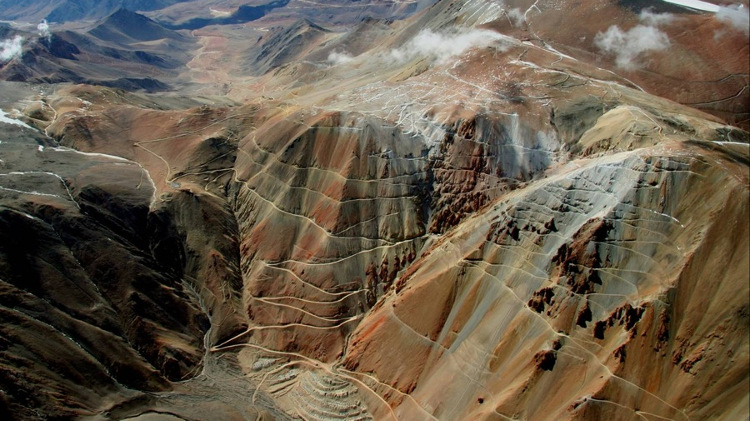Agnico Eagle's Goldex mine in Val d'Or in March. The company installed the Rail-Veyor haulage solution to access gold at its Deep 1 deposit. Kelsey Rolfe
Welcome back to your weekly mining news recap, and happy long-weekend to all our Canadian readers! (Except for those in Quebec and Yukon – we understand your pain, we’re bitter too.) Before you start your weekend off early, let us help you get caught up on the mining news you might’ve missed. Among this week’s headlines: Rio Tinto approves its first funding for its “intelligent mine,” Ontario announces a constitutional challenge to carbon pricing and BHP’s Escondida workers approve a strike.
*****
This week began with a bang disguised as a whimper. Canada quietly revised its carbon pricing plan due to “competitiveness concerns” from industry consultations, the Globe and Mail first reported (subscription required). According to the government’s technical backgrounder, the changes will increase the benchmark at which industrial emitters begin paying for their carbon emissions, which significantly reduces the carbon tax faced by companies that are more efficient than their industry average. The worst industry emitters will also see their taxes reduced, but by proportionally less.
Rio Tinto approved an initial US$146-million investment in its Koodaideri iron ore project in the Pilbara, the company’s first-ever “intelligent mine.” Koodaideri, if it gets the go-ahead, is expected to implement autonomous drilling, haulage and rail transport. All the designs for the mine are digital, and the mine’s components are first being built in 3D models, which will become digital twins for maintenance. Rio Tinto expects to make a final decision on the project by the end of the year. (By the way, this would be a good time to read our profile of Stephen McIntosh, Rio’s Growth and Innovation Group lead, who was one of our 2018 Names to Know.)
Barrick’s making a bigger push to attract Chinese institutional investors under its new pact with Shandong Gold, Reuters reported on Wednesday. The company is hoping more long-term Chinese investors will increase the demand and value of its stock.
Kinross Gold is pausing its expansion work at its Tasiast gold mine in Mauritania. The Mauritanian government requested the company enter discussions about improving the country’s economic benefits from Kinross’s activities. Tasiast’s second-phase expansion was supposed to add 30,000 tonnes per day of processing capacity to the mill.
The Ontario government is launching a constitutional challenge to Canada’s carbon pricing plan, fulfilling an election promise made by new Premier Doug Ford. The challenge, announced Thursday, will be heard in the Ontario Court of Appeal, but an independent legal opinion for the government of Manitoba indicates that it will probably fail because a court would most likely uphold the carbon tax as part of the federal government’s broad taxation powers.
Also on Thursday, workers at BHP’s Escondida copper mine in Chile said they would go on strike on August 6 if the company does not improve its contract offer. The union voted on Wednesday to reject the company’s final offer of a US$18,000 signing bonus for each worker and a 1.5 per cent salary bump with increases for inflation. The union requested a bonus of double what the company was offering, and a five per cent increase in wages. Escondida is the largest copper producer in the world, and last year’s 44-day worker strike significantly disrupted copper markets.
In other labour news, Imperial Metals reported on Thursday evening that its unionized Mount Polley employees voted to accept a three-year contract, with an effective date of January 1, 2018. The employees are “currently being recalled to work to reestablish normal operations,” the company said. Mining operations have been suspended since the strike began on May 23, when Imperial tried locking workers out for three hours to force an agreement. The union and the company reached a tentative deal last week, and voted on it earlier this week.
As reclamation performance becomes a more important part of the permitting process, UAVs could provide a simple tool to help companies plan for the mine’s post-operation life. In a column for our June-July issue, Kelsey Martin, the founder of Martin Remote Sensing Corp., outlines a quick and cost-effective approach for using aerial topography for reclamation planning.
If you’re looking for some weekend reading, our project profile of Agnico Eagle’s Goldex mine is new on the website this week. To access the gold far below the surface at Goldex without spending a mint, Agnico gave the Rail-Veyor haulage system the opportunity to prove its worth.



